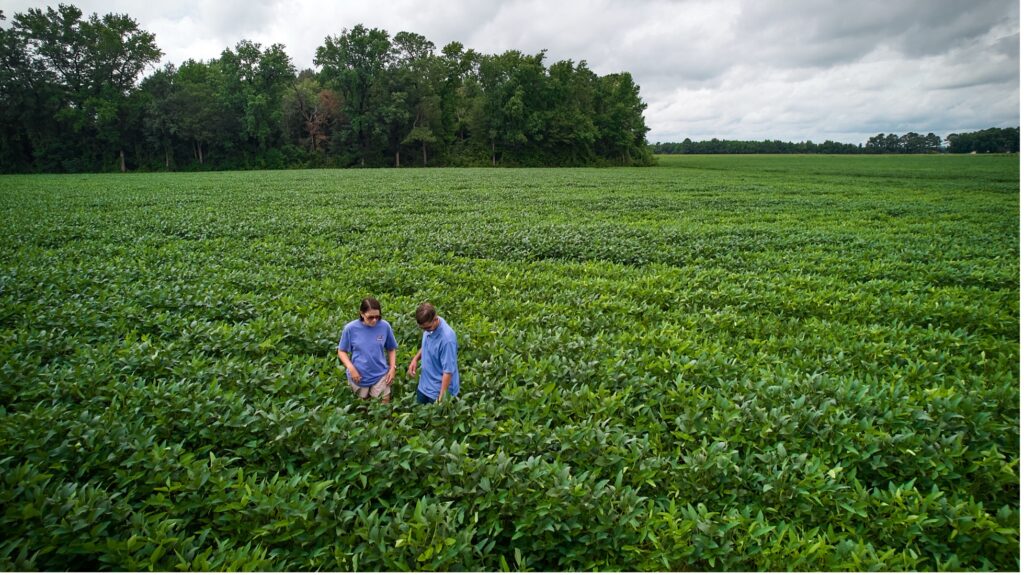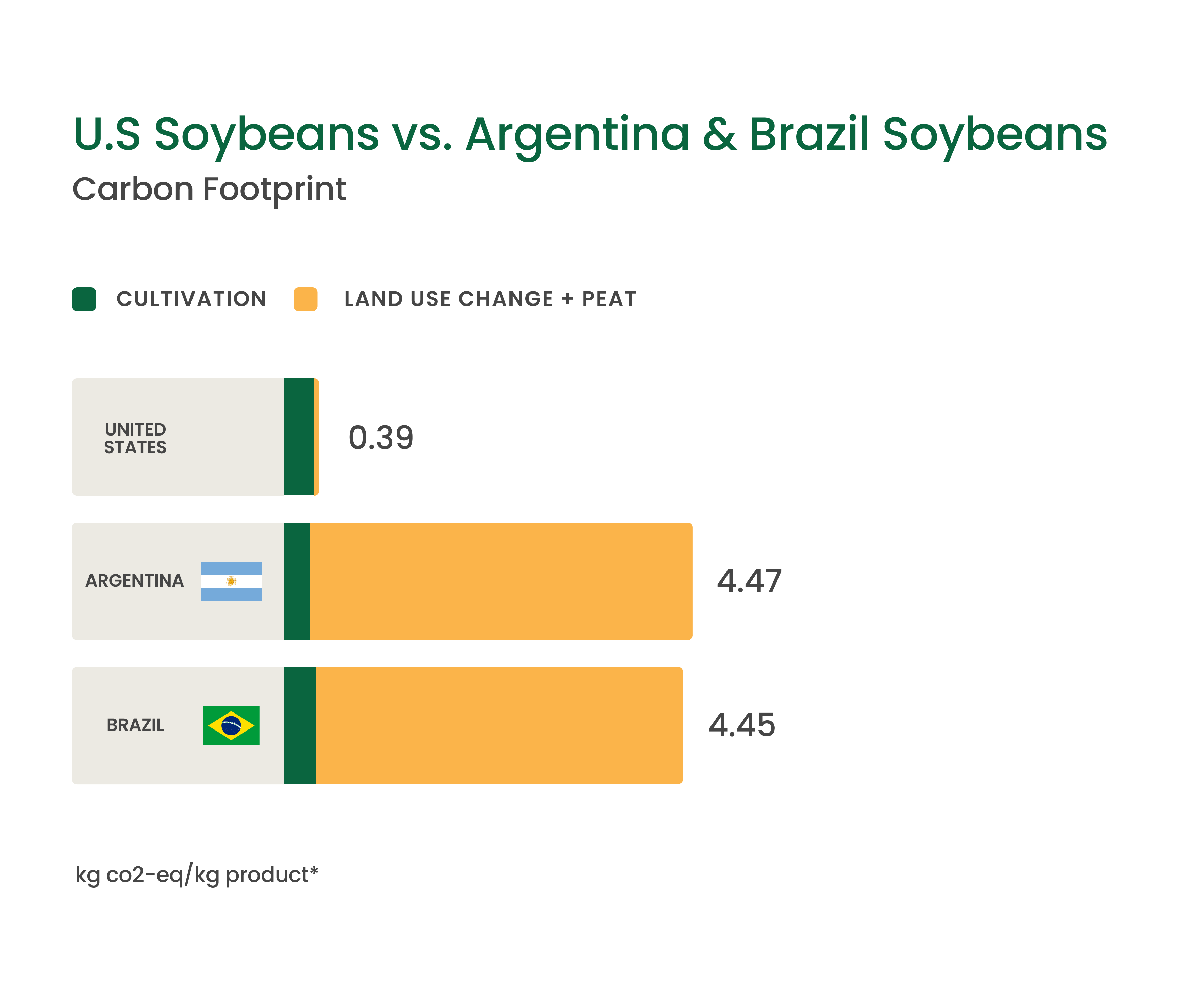

Sustainability
U.S. Soy is the World’s Most Sustainable Soy
U.S. soybean farmers are global leaders in sustainable agriculture and farming practices. As we face a growing global population and a changing climate, U.S. Soy is committed to supporting global nutrition security while producing the world’s most sustainable soy.
Backed by decades of innovation and environmental stewardship, U.S. Soy offers the lowest carbon footprint compared to soy grown in other countries as measured by Blonk Agri-footprint database.
The sustainability of U.S. Soy is verified by the U.S. Soy Sustainability Assurance Protocol (SSAP), a national scheme that defines, documents and verifies sustainable soy production in the United States. The SSAP outlines sustainability principles and best practices related to environmental stewardship, social responsibility and economic viability — all backed by stringent U.S. laws, audited practices, and verified by third parties.
U.S. Soy’s Sustainable Farming Practices
U.S. soybean farmers are stewards of the environment and leaders in sustainable farming methods, always working to grow more while using fewer resources. Their farming practices help support lower greenhouse gas emissions and build healthier soils. U.S. Soy farming methods include:
- Conservation tillage, which enhances soil health and crop yields
- Planting cover crops to enhance organic matter and reduce soil erosion
- Carbon sequestration, helping offset their carbon footprint
- Creating pollinator habitats, providing critical protection that 80% of global crops need to survive1
- Conserving water and maintaining water quality
- Using precision technology to improve efficiency
- Crop protection, leveraging knowledge and approved technology
- Post harvest planning, prioritizing sustainable practices

Leading The Way with Continuous Improvement Goals
U.S. Soy’s commitment to sustainable agriculture is a long-term promise rooted in conservation programs created through the U.S. Department of Agriculture’s Natural Resources Conservation Service more than 75 years ago.
U.S. Soy farmers have set ambitious 2030 sustainability goals2:
- Reduce Land Use Impact by 10%
- Reduce Soil Erosion by 25%
- Reduce Energy Use by 10%
- Reduce GHG Emissions by 5%
Protecting and Expanding U.S. Forestland
The amount of land used for crop cultivation in the U.S. has decreased in the last 20 years, while U.S. forestland has increased3. That’s a sharp contrast to other regions, where new soybean fields often replace tropical forests4, releasing large amounts of carbon into the atmosphere. Choosing U.S. Soy means supporting a system that helps preserve native ecosystems and forestland while protecting the environment.
Fact Sheets
Download resources that show how soy’s carbon footprint is calculated, including the impact of Land Use Change, and access specific data for your market.
Carbon Footprint of Whole Soybeans
Carbon footprint calculations for soybean crops are based on numerous factors, including transportation methods and the amount of land converted from natural ecosystems, such as forestland, to farmland.
The carbon footprint data in this chart5 compares the impact of whole soybean production over a 20-year period between the U.S., Argentina and Brazil.

Sustainable U.S. Soy is a Business Advantage
Customers care about sustainable agriculture and farming practices. By sourcing U.S. Soy, you’re aligning with those practices – while reaping the many benefits that come with the world’s most sustainable soy. Whether it’s providing nutrition for people, livestock or farmed seafood, sustainable U.S. Soy empowers you to be part of building a healthier planet while growing your business.
1. U.S. Department of Agriculture Pollinator Habitat Planting fact sheet
2. These goals were adopted by key U.S. Soy organizations in December 2024 and are based on Field to Market 2020 benchmark.
3. U.S. Natural Resource Conservation Service (NRCS) 2017 Natural Resources Inventory
4. World Resources Institute Global Forest Review https://gfr.wri.org/forest-extent-indicators/deforestation-agriculture?utm_source
5. Mérieux NutriSciences | Blonk, Agri-footprint *Results based on default emission modelling, including land use change emissions, according to the rules of the PEFCR-Feed guidance document (European Commission, 2018) as implemented in the Agri-Footprint 6.3 database. Input data rely on country average FAO statistics and other secondary sources. Supplier specific information would improve data quality and may provide differing results. Comparisons have not been reviewed in the context of ISO 14040/14044 compliance.

